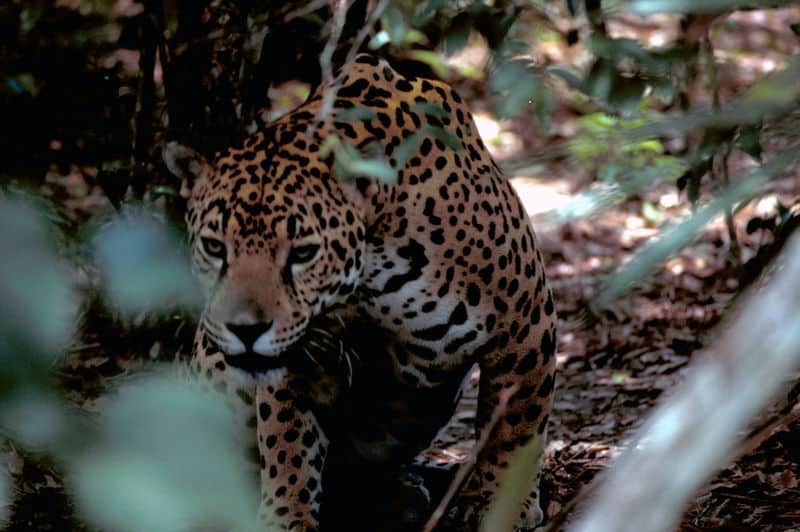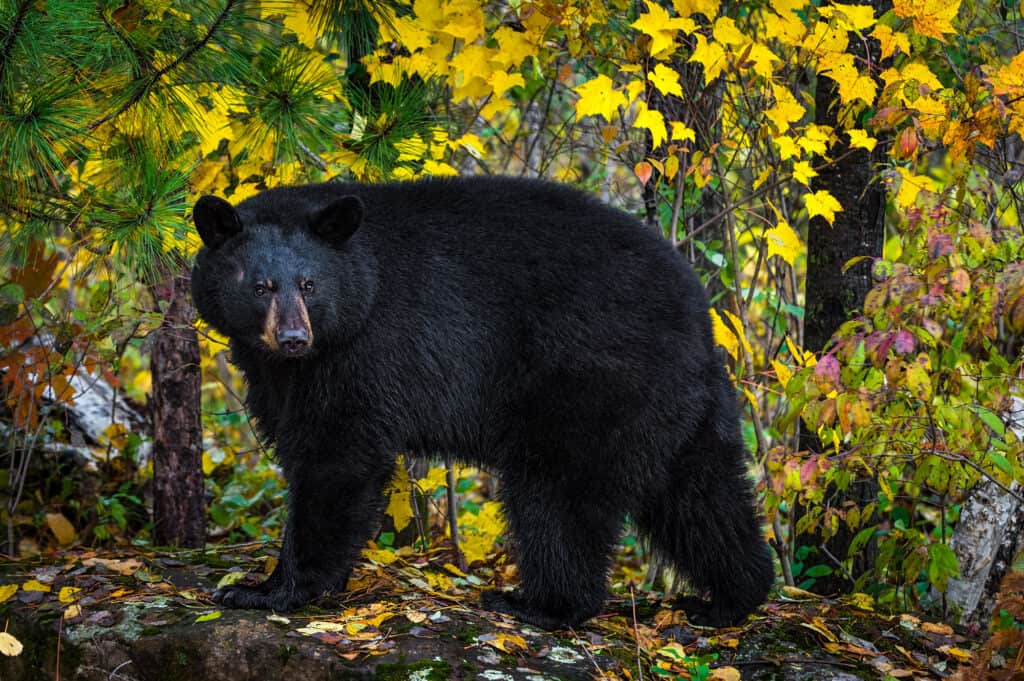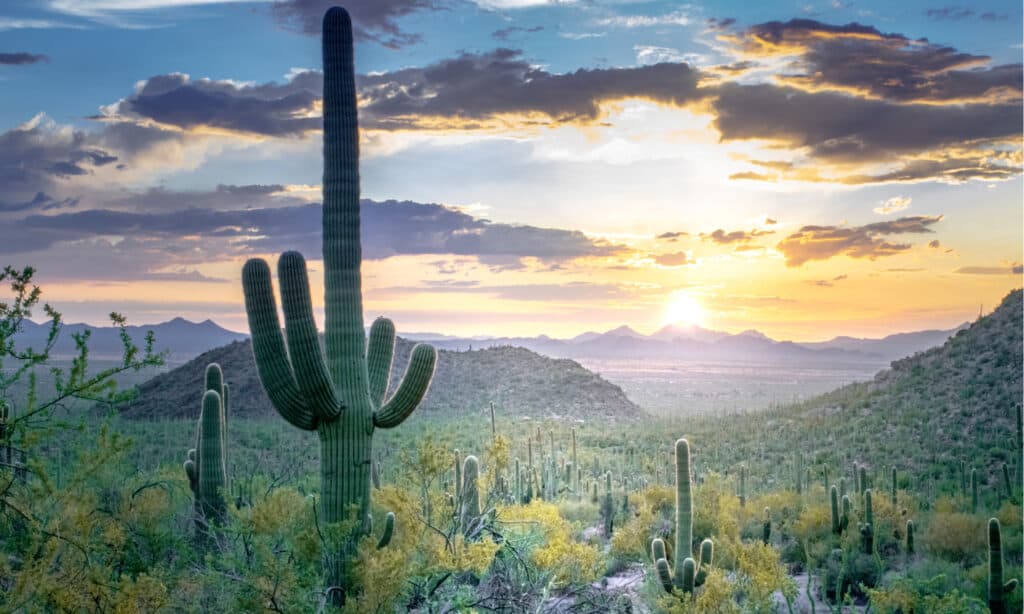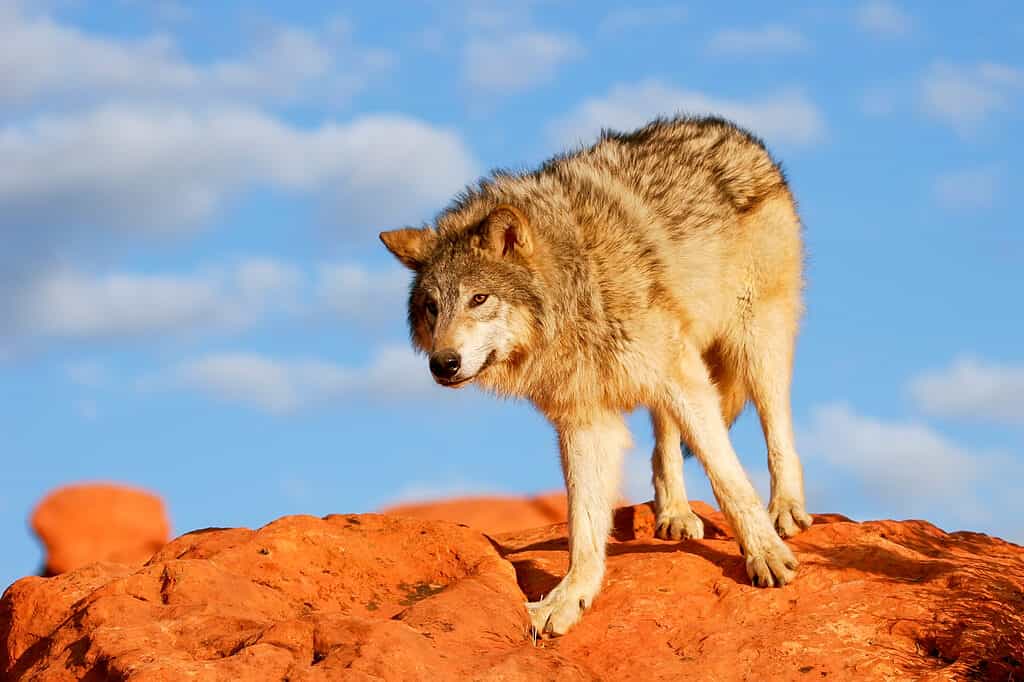Key Points:
- Jaguars range from Argentina to Northern Mexico and are fierce apex predators that are incredibly fast and ferocious hunters.
- Not a single jaguar female or cub has been seen in the U.S. since 1949, but a few males have been known to cross the US-Mexico border through the desolate mountain ranges of the Southwest.
- El Jefe was the only living jaguar in the USA between 2011-2015. Male jaguars have a life expectancy of only 12-15 years, and El Jefe is now at least 12 years old.
During the 1800s, jaguars spanned all over the United States, from California to the Carolinas. But hunting played a significant role in decreasing their numbers. In 1949, the last female jaguar in the United States was hunted and killed in Arizona. Since then, some jaguars have been spotted in Arizona, near the US-Mexico border. There is a possibility of the jaguar returning to the USA – after nearly 80 years! One such jaguar, “El Jefe” has been spotted in the USA a few times over the past decade, giving wildlife biologists hope that others may follow suit soon.
What Is a Jaguar?
Jaguars are the largest big cat in the Americas and the third largest big cat worldwide. They range from Argentina to Northern Mexico and are a fierce apex predator that is an incredibly fast and a ferocious hunter. Unfortunately, these beautiful creatures have been hunted excessively throughout the past two centuries, leading to a rapid decline in their population. This, and shrinking wild spaces, were the main causes for the demise of the Arizona jaguar.
The only other big cats in the wild in the United States are the mountain lion, the ocelot, the jaguarundi, the Canadian Lynx, and the bobcat. All are smaller with different coloration, so they can be easily distinguished from the jaguar. The Lynx and the bobcat are not endangered species as all the others are.

Jaguars
are the largest
big cat
in the Americas and the third largest big cat worldwide.
©Gary M. Stoltz, Public domain, via Wikimedia Commons – License
How Many Jaguars Have Been Spotted in the USA?
Not a single jaguar female or cub has been seen in the United States since 1949, but a few males have been known to cross the US-Mexico border and wander through the desolate mountain ranges of the Southwest. The jaguar population used to range as far north as Southern Nevada. However, today, the most northern breeding population of jaguars is in the Mexican state of Sonora.
This breeding population is very close to the border, so a few jaguars have ventured across onto U.S. soil. A male jaguar was spotted in southeastern Arizona in 1996; since then, only one more has been known to cross the border.
In 2011, a male jaguar was seen in the Santa Rita mountains of Arizona. This jaguar, named “El Jefe,” was frequently spotted and photographed between 2011 and 2015.
Who is “El Jefe”?
So what made “El Jefe” the jaguar so famous in the first place? There are several reasons for it. El Jefe was the only living jaguar in the USA between 2011-2015. Many biologists from both sides of the border studied him, as he was a sign that the USA’s jaguar population could bounce back. El Jefe is thought to have been born in the Sierra Madre in northern Mexico, which is a popular breeding ground for jaguars. He then ventured across the US border. Over the years, he has been sited in southern Arizona, New Mexico, and west Texas before crossing back to the Mexican side of the Santa Rita mountain and being spotted in Sonora again. He was thought to be dead until he was seen again in 2021.
El Jefe Has A Taste For Bears
El Jefe means “the boss” in Spanish. He was named this because he managed to cross the heavily guarded border fence designed to prevent Mexican immigrants from crossing. What’s even more fitting to this name is the fact that El Jefe eats bears!
The Santa Rita mountains are home to black bears. Typically, jaguars hunt deer, javelinas, and other desert-dwelling herbivores. But since the black bear population in Arizona has had virtually no predators for the past century, they became a surprisingly easy target.
Unlike deer and javelina, black bears in Arizona do not flee immediately when they see a jaguar because the animal is not a known threat. They may even approach a jaguar out of pure curiosity, allowing it to pounce quickly.
Field analysts have discovered jaguar scat with bear hairs in it and bear remains that show obvious signs of predation. However, jaguars do not typically feed on bears, so this is a unique scenario.

The Santa Rita mountains are home to
black bears
.
©Holly Kuchera/Shutterstock.com
Where Is El Jefe Now?
El Jefe has magnificent leopard-like rosettes all over his body. Like the human fingerprint, each leopard has its own spotted pattern, making it easy for scientists to identify an individual jaguar. This is how researchers have been able to track El Jefe.
A researcher for the Northern Jaguar Project, Carmina Gutiérrez-González, spotted and identified El Jefe this year in Sonora. She used identification software matching the prints on its body.
El Jefe’s DNA samples have also been collected from recent scat droppings found in Sonora. Field biologists and conservationists hope this DNA can be used to determine El Jefe’s breeding. This will also help to identify whether or not some jaguar cubs in Mexico share the same DNA as him.
Male jaguars have a life expectancy of only 12-15 years, and El Jefe is now at least 12 years old. So El Jefe was predicted to be dead until this year when he was spotted again in Sonora. The jaguar will likely remain in this region until his death. He is getting very old and will not probably venture far from his current location.

A researcher for the Northern Jaguar Project, Carmina Gutiérrez-González, spotted and identified El Jefe this year in Sonora.
©Nate Hovee/Shutterstock.com
Will Jaguars Return To The USA?
Jaguar males venture miles to find mates. This is why El Jefe traveled such long distances during his time in the USA. There are nearly 200 jaguars located in Mexican Sonora, so the possibility of more jaguars crossing is high. The climate and terrain of southern Arizona is perfect for jaguars. Efforts have been made by animal organizations to preserve the natural corridor between Mexico and the USA.
Unfortunately, the new border wall that has been partially built between the two countries makes it much more unlikely that any jaguars will cross the border anytime soon. This is why several wildlife experts have been advocating for the removal of sections of the wall. It would allow wildlife to travel back and forth.
Although the exact number of jaguars on either side of the border is unknown, there are 176 that have been identified over two decades by the Northern Jaguar Project. “El Jefe” is one of those that have been spotted in the past 20 years. He has been seen in the Santa Ritas and is one of only two that have crossed the Mexico-US border.
For jaguars to return to the USA, first, the population in Northern Mexico needs to stabilize. The jaguar population has been on the decline in the past 80 years. This is due to shrinking habitats and ranchers who kill jaguars who hunt their cattle. If the jaguar population in the Sonora grows, the possibility of male and female jaguars crossing the border and breeding becomes more of a possibility. But for now, with the border wall creating a natural barrier and the jaguar population on the decline, this remains unlikely.
Bonus: Does the Border Wall Effect Wildlife Other Than the Jaguar?

The Mexican grey wolf is one of many animals affected by the southern border wall.
©Don Mammoser/Shutterstock.com
Much of the southern border wall slices through one of North America’s most unique and diverse landscapes, the borderlands. Spanning desert, mountain, and subtropical habitats – this region supports thousands of species of plants and animals as well as human communities of cultural and historic importance. New Construction has bulldozed desert habitats and destroyed native cultural sites. Millions of gallons of much-needed water have been used to mix concrete.
The wall blocks access to national refuge land in the Lower Rio Grande Valley and subverts the range of animals such as the jaguar, gray wolf, bighorn sheep, ocelot, Sonoran pronghorn, Greater road runners, scaled quail, and a rare species of ground-running Ferruginous pygmy owl. These animals have grown used to running freely within a network of national parks and refuges on both sides of the border. The wall prevents them from finding food and mates on either side – while floodlights may disrupt migrations and pollinators.
The photo featured at the top of this post is © Pedro Helder Pinheiro/Shutterstock.com
Sources
- Washington Post, Available here: https://www.washingtonpost.com/world/2022/08/10/el-jefe-jaguar-found-mexico/
- Smithsonian Magazine, Available here: https://www.smithsonianmag.com/science-nature/return-great-american-jaguar-180960443/
- AP News, Available here: https://apnews.com/article/mexico-climate-and-environment-542857c6c69cab358385bed2c63c645c#:~:text=%E2%80%9CEl%20Jefe%E2%80%9D%20%E2%80%94%20or%20%E2%80%9C,ecologists%20of%20the%20Borderlands%20Linkages
- AZ Central, Available here: https://www.azcentral.com/story/news/local/arizona-environment/2022/08/05/rare-jaguar-el-jefe-roamed-arizona-spotted-across-border/10251057002/
FAQs (Frequently Asked Questions)
How many jaguars are there in the world?
There are around 175,000 jaguars in the world, all located in North and South America. Most of them are located in the Brazilian Amazon.
What big cats are in North America?
There are six species of big cats spread across North America: the jaguar, the bobcat, the puma, the ocelot, the jaguarundi, and the Canada lynx.
How old is “El Jefe” the jaguar?
El Jefe is currently at least 12 years old, so he is near the end of his life. Jaguars generally live to be between 12 to 15 years of age.
Do we have jaguars in the United States?
There were once jaguars all across the USA, but they were eradicated by overhunting in the early 20th century. Only 2 jaguars have been spotted on US soil since 1949.
Where is El Jefe?
El Jefe was last spotted around 100 miles south of the US border in the state of Sonora, Mexico.
Where are jaguars found?
Jaguars are found in Mexico, stretching all the way down to South America. Around 50% of the world’s jaguars are found in Brazil.
Thank you for reading! Have some feedback for us? Contact the AZ Animals editorial team.





